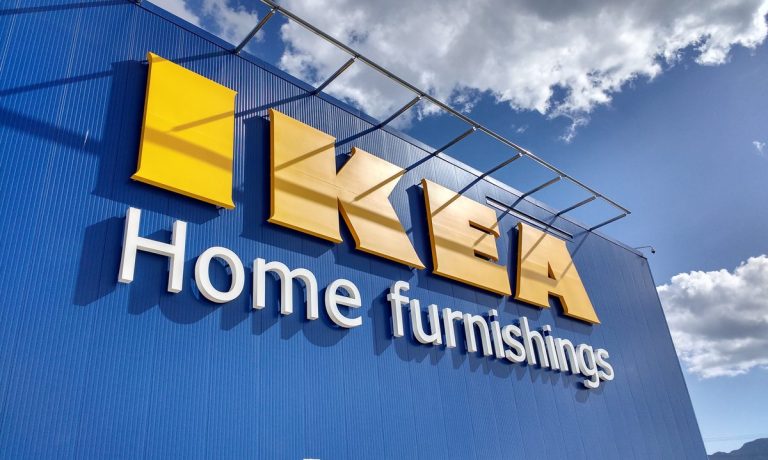
As if the furniture business were not facing enough challenges already, the industry’s largest player is looking to capitalize on the present turmoil with a fresh competitive threat to its struggling rivals.
This on news that the Swedish giant Ikea, which did more than $44 billion in sales last year — more than three times that of rival Wayfair — is embarking on a $3 billion store refresh program aimed at turning its warehouse stores into fulfillment centers.
According to Tolga Oncu, retail manager at Ingka Group, which oversees Ikea stores and franchises worldwide, the 70-year-old operator of 466 global locations is embarking on a plan to transform and redesign its famed big blue box suburban outlet to better accommodate how increasingly digital consumers are shopping.
“We feel we have a catch-up to do on the back-end of our operation (and) we have realized that by including stores in our last mile and fulfillment design network we can create a win-win situation,” Oncu told Reuters. “Instead of building central warehouse capacities for online buys, why don’t we send it from our IKEA stores?”
Digital Furniture Dilemma
Although Ikea and Ingka Group are privately held, the move comes at a time when rampant inflation is crimping consumer spending and supply chain bottlenecks are complicating inventory and delivery. The investment and upgrade plan also coincides with mounting pressure from investors on Ikea’s publicly traded competitors who have seen their share prices drop anywhere from 35% to 75% over the past six months.
To that point, nowhere have the challenges of selling large bulky furniture been more acute than at Wayfair, the Boston-based online retailer that has seen its market value drop 80% and slip below $7 billion from roughly $35 billion a year ago.
After reporting its first-quarter earnings last week, where Wayfair reported a 14% drop in sales and $319 million loss, CEO Niraj Shah told investors that the normalization of consumer behavior, which had skewed heavily toward eCommerce in 2020 and then swung back to physical retail in 2021, has undergone another shift over the past two months.
“With rising prices across the retail universe and amidst troubling geopolitical events, our mass customers in the U.S. and internationally appear understandably more focused on where they are spending their next dollar, pound or euro,” Shah said, noting that while retail spending was still climbing overall, what consumers were spending on had changed.
“Even with the relatively healthy individual balance sheet, shoppers are, nonetheless, turning a larger share of their wallets to non-discretionary categories and reprioritizing experiences like travel,” Shah said.
The Omnichannel Opportunity
Two months before the Ikea revamp news, retailer Williams-Sonoma, which also owns the Pottery Barn and West Elm brands, had already announced a “store evolution” plan aimed at increasing its omnichannel efforts, while citing data that showed these hybrid, in-store and online shoppers are heavy spenders.
“We are reimagining our stores for the future, transitioning them to design centers and omni fulfillment hubs,” CEO Laura Alber said in an investor presentation. “Our [500+ physical] stores are a competitive advantage that supports our ecommerce growth [at a time when] omnichannel customers spend 4 times more and 3 times as frequent than single channel customers,” she added.
With a 30%, 12-month drop, shares of Williams-Sonoma are outperforming Wayfair and rival Restoration Hardware, now known as RH, whose stock is down 55% in the past 12 months.
As for Ikea, the retailer’s latest annual review showed sales rose slightly in 2021, after posting their first-ever annual decrease in 2020, led by a 73% increase in its digital business which accounts for only about one-quarter of total revenues.
At the time, the brand known for its low cost, flat-packed furniture and meatballs at its in-store cafeterias also said it was saying goodbye to its catalog.
“A difficult decision, but the right one for our business and our customers,” Inter Ikea Group CEO Jon Abrahamsson Ring said in the letter which noted consumers changed behavior and media consumption habits. “Moving beyond the catalogue allows us to focus our time and resources towards making our omnichannel vision a reality,” he added.